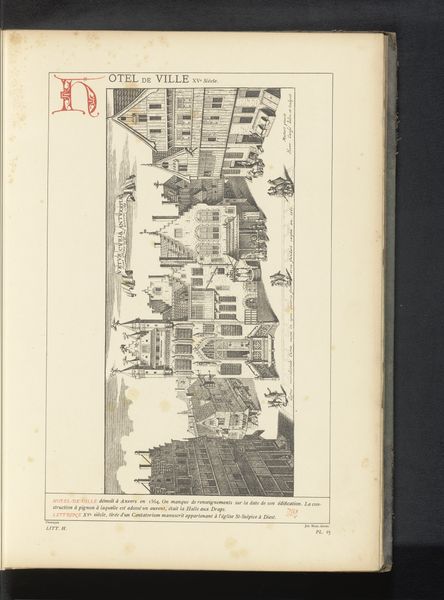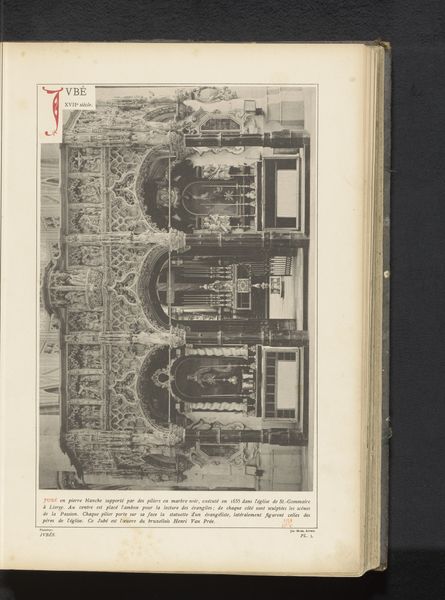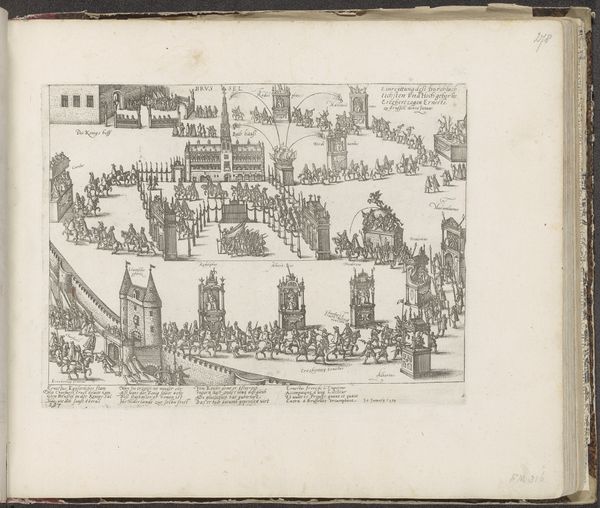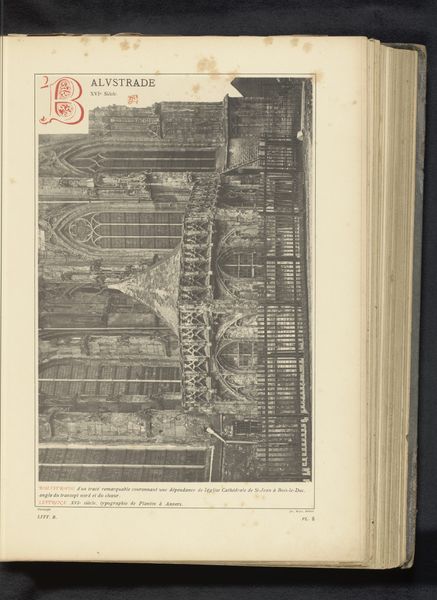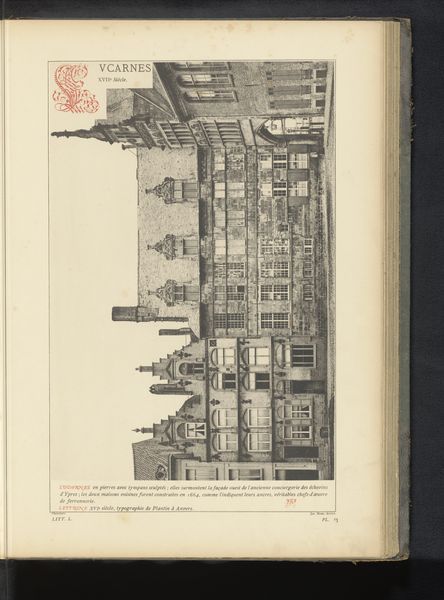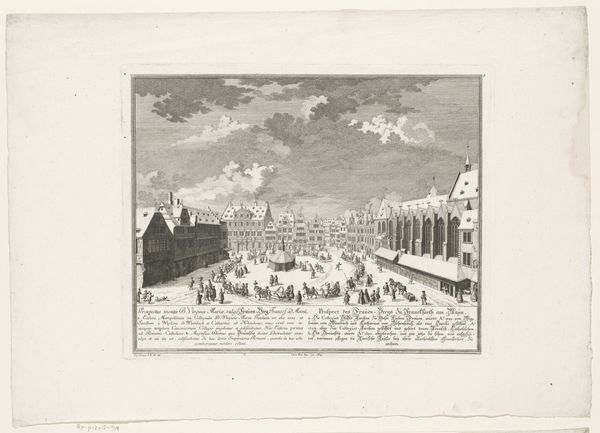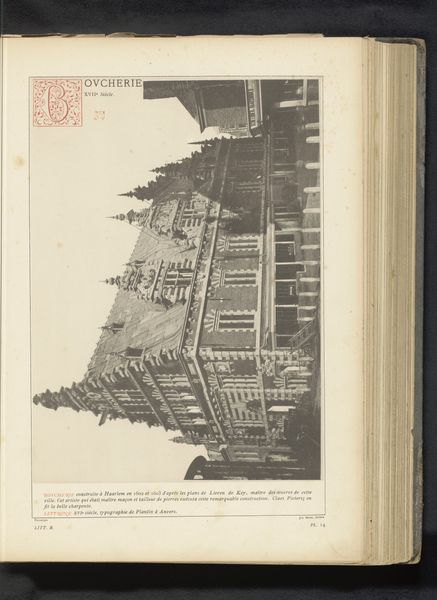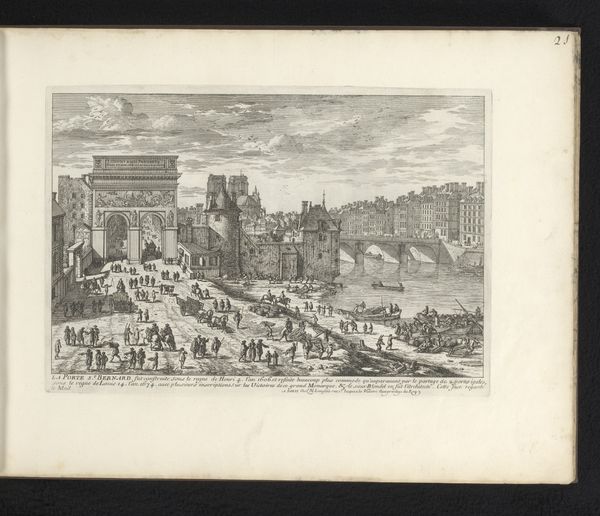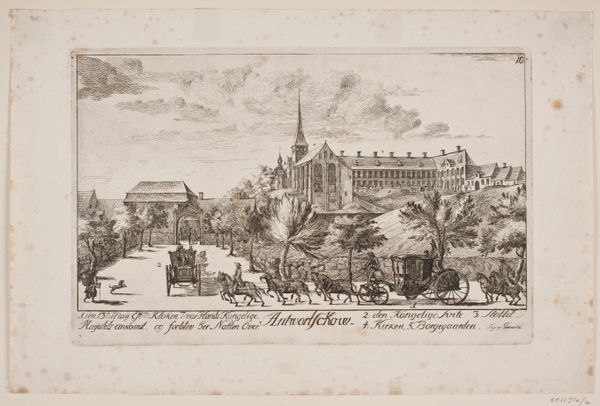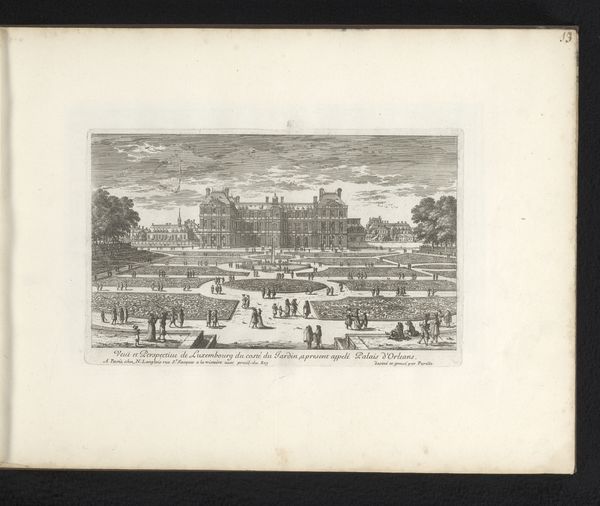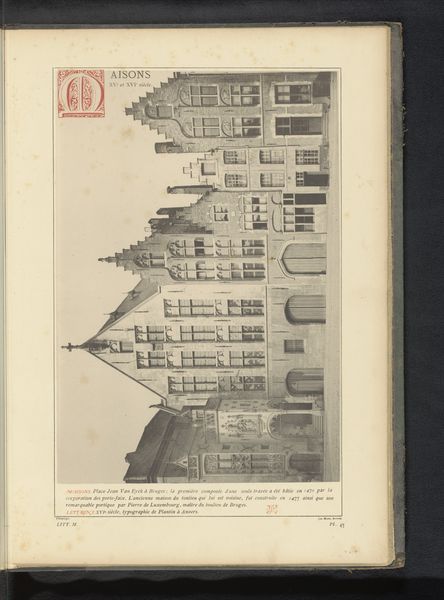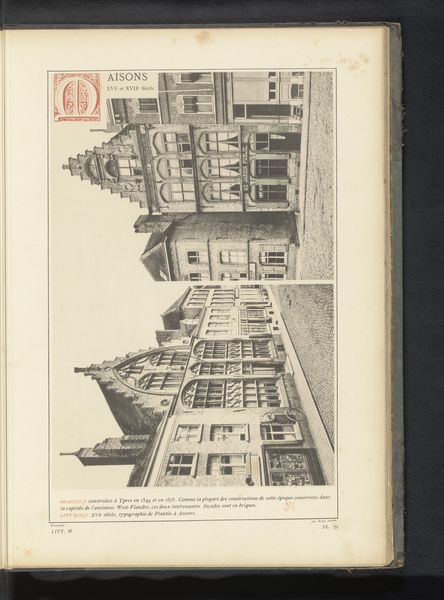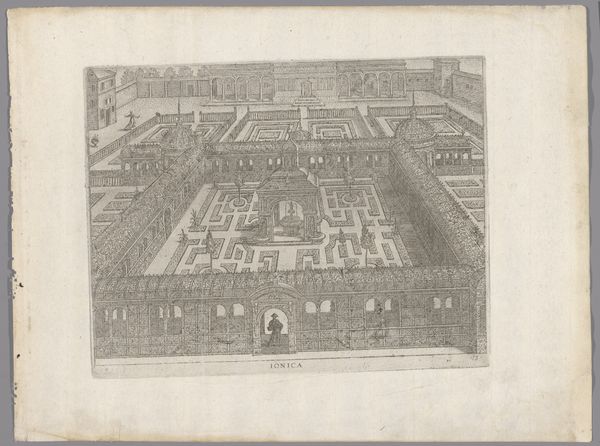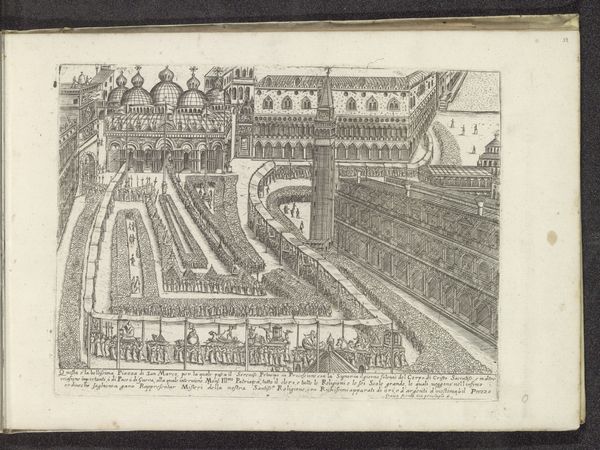
Gezicht op een hoek van het stadhuis van Middelburg met beelden in nissen van graven en gravinnen van Vlaanderen en Zeeland before 1880
0:00
0:00
print, sculpture, engraving, architecture
# print
#
romanesque
#
sculpture
#
cityscape
#
engraving
#
architecture
Dimensions: height 231 mm, width 336 mm
Copyright: Rijks Museum: Open Domain
Editor: This is an engraving titled "Gezicht op een hoek van het stadhuis van Middelburg met beelden in nissen van graven en gravinnen van Vlaanderen en Zeeland," made before 1880 by an anonymous artist. It features a detailed depiction of a city hall, almost gothic looking, with many statues of nobles and royalty. I'm immediately struck by the intense detail, but what do you see in it? Curator: The choice to depict this building specifically, adorned with statues of counts and countesses, feels pointed. I’m curious about the context of Middelburg and the provinces of Flanders and Zeeland during the period the print was made. This detailed rendering could be a deliberate act of historical preservation but also perhaps of nationalist assertion. The subjects of the statues represent historical rulers with varying levels of legitimacy or popularity in retrospect. Editor: I didn’t consider it like that, I was really just thinking that it looked amazing. How might we interpret this through a contemporary lens? Curator: We can consider whose stories are being told and whose are being left out. Who had the power to commission and erect these statues, and whose perspectives were marginalized in that process? Does the detailed focus on these historical figures serve to legitimize a particular power structure, even in the late 19th century when this engraving was made? How do visual representations of power intersect with societal hierarchies? Editor: So you’re saying this isn’t just about a pretty building; it's a statement, intentionally or unintentionally, about power and legacy. Curator: Exactly! By critically examining these historical representations, we can uncover deeper socio-political meanings. It is essential to consider both the historical intentions and the contemporary resonances to generate richer understandings of these representations. Editor: I never thought of it that way. I'll definitely consider the cultural and historical context more deeply in the future.
Comments
No comments
Be the first to comment and join the conversation on the ultimate creative platform.
